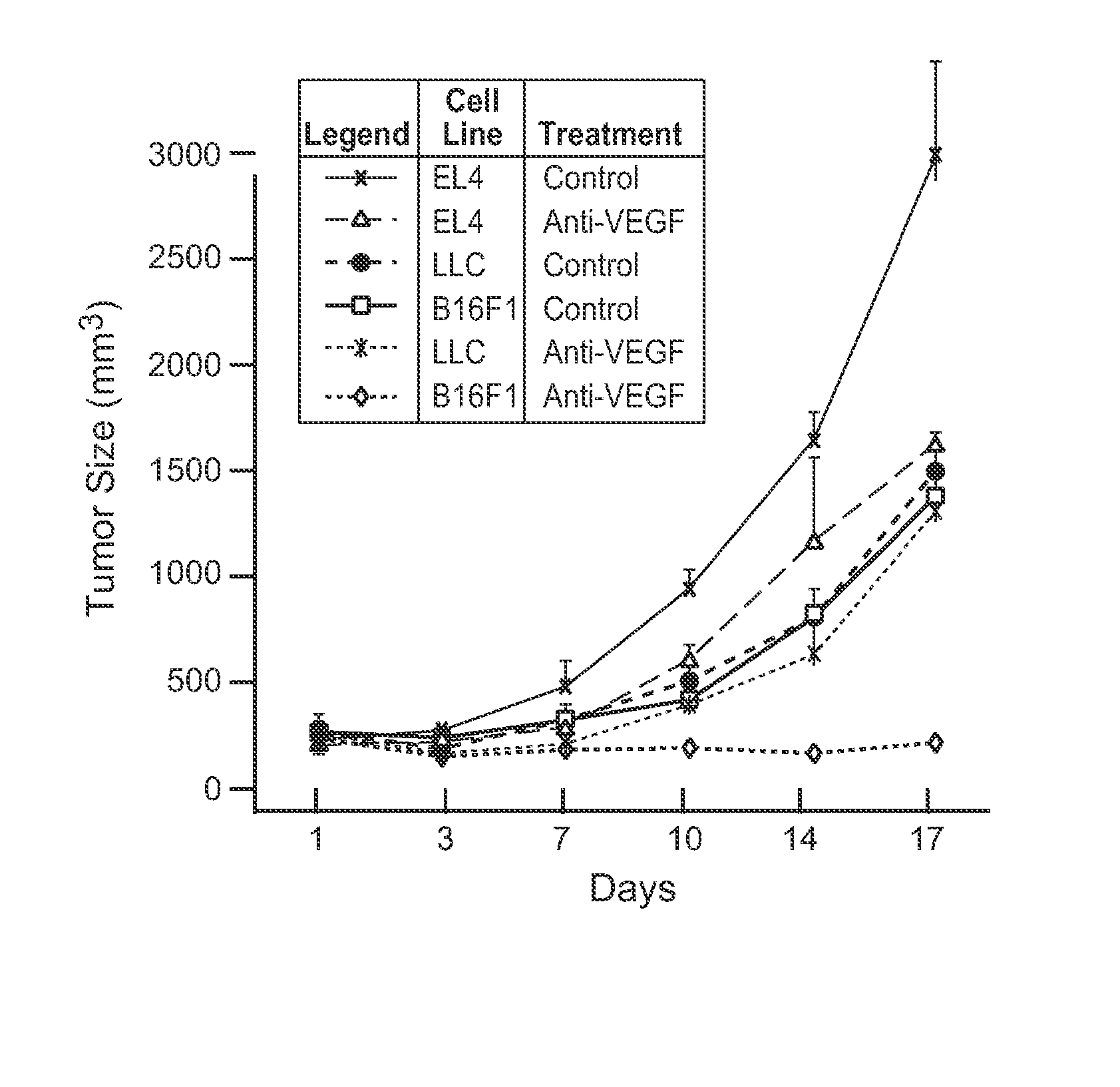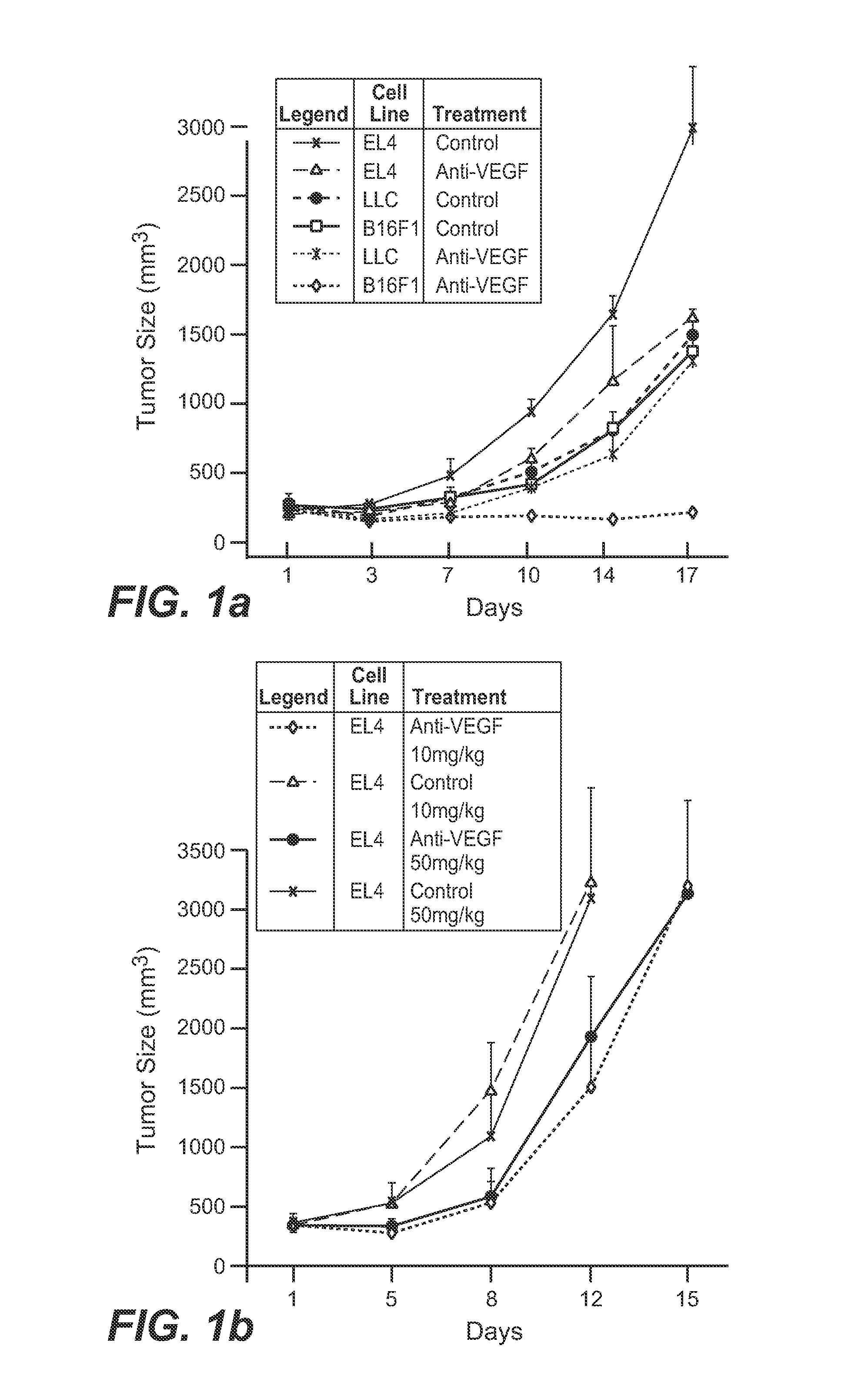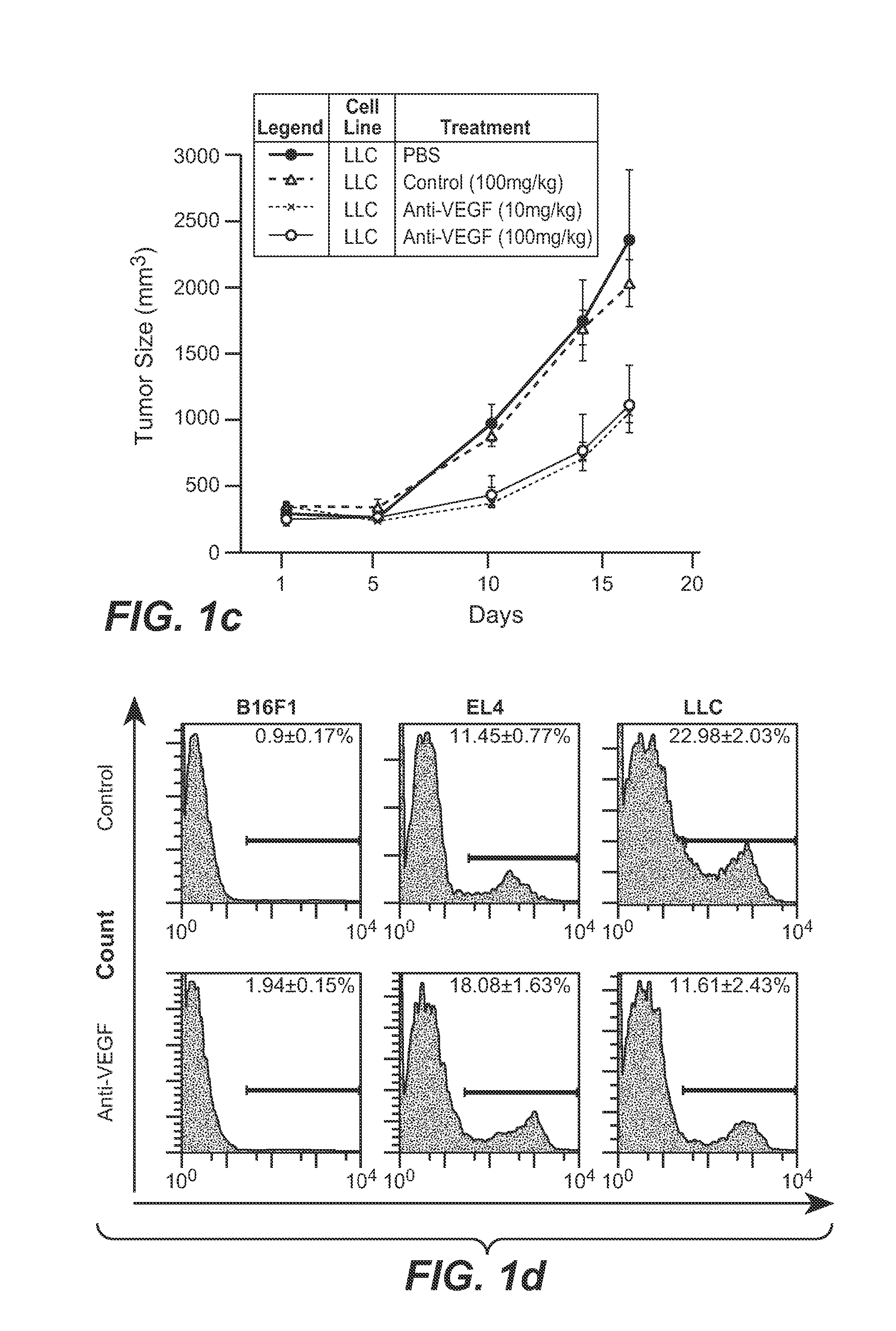Diagnostics and treatments for tumors
a tumor and tumor technology, applied in the field of tumor growth and tumor type, can solve the problems of complex cellular and molecular events underlying the resistance to anti-vegf treatment, and the limited long-term ability of therapeutic compounds to interfere with tumor growth
- Summary
- Abstract
- Description
- Claims
- Application Information
AI Technical Summary
Benefits of technology
Problems solved by technology
Method used
Image
Examples
example 1
Tumor Resistance to Anti-VEGF Treatment Conferred by CD11b+Gr1+ Myeloid Cells
[0289] The cellular and molecular events were investigated, which lead to resistance of experimental tumors to anti-vascular endothelial growth factor (VEGF) treatment. A correlation between recruitment of bone marrow-derived cells and the development of tumor resistance to anti-VEGF treatment was found. Tumor admixing experiments demonstrated that CD11b+Gr1+ cells isolated from either bone marrow or tumors of mice bearing anti-VEGF-resistant (but not anti-VEGF-sensitive) tumors, are sufficient to confer resistance to anti-VEGF treatment. In vitro, conditioned media from anti-VEGF-resistant (but not anti-VEGF-sensitive tumors) stimulated migration of CD11b+Gr1+ cells. Recruitment of CD11b+Gr1+ cells to primary tumors represents a cellular mechanism mediating resistance to anti-VEGF treatment. Gene expression analysis of tumor-primed CD11b+Gr1+ cells identified a distinct set of genes regulated by resistant...
example 2
Additional Factors From Tumor Models which are Resistant to Anti-VEGF Treatment
[0335] Additional factors from tumors which may directly or indirectly aid or provide resistant to tumors, were identified. Mouse lymphoma tumor lysates that are resistant to anti-VEGF treatment (e.g., EL4 and L1210) were treated with anti-VEGF antibody (G6-31) at 5 mg / kg / week, twice / week for 2 weeks. After treatment, the tumors were pooled and homogenized in 6 ml RIPA buffer 2× with protease inhibitors (Roche). The homogenization was centrifuged 2×15 minutes at 14,000 rpm in eppendorf centrifuge. The supernatant was diluted 1:1 in 20 mM Tris, pH 7.5, 50 mM NaCl and applied to 1 ml HiTrap HS. The column was washed with start buffer (20 mM Tris, pH 7.5, 50 mM NaCl) and then eluted with about 5 column volumes of step wise increase in NaCl concentrations (0.25M NaCl, 0.5 M NaCl, 1 M NaCl, and 3 M NaCl). Peak fractions at each step were collected. See FIG. 8.
[0336] A variety of factors were found in the hig...
PUM
| Property | Measurement | Unit |
|---|---|---|
| molecular mass | aaaaa | aaaaa |
| time | aaaaa | aaaaa |
| tumor shrinkage | aaaaa | aaaaa |
Abstract
Description
Claims
Application Information
 Login to View More
Login to View More - R&D
- Intellectual Property
- Life Sciences
- Materials
- Tech Scout
- Unparalleled Data Quality
- Higher Quality Content
- 60% Fewer Hallucinations
Browse by: Latest US Patents, China's latest patents, Technical Efficacy Thesaurus, Application Domain, Technology Topic, Popular Technical Reports.
© 2025 PatSnap. All rights reserved.Legal|Privacy policy|Modern Slavery Act Transparency Statement|Sitemap|About US| Contact US: help@patsnap.com



